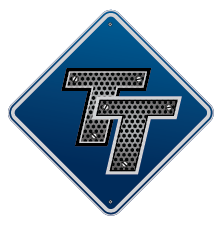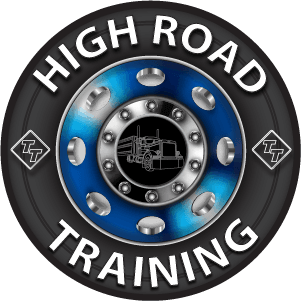ATTN NEW DRIVERS: The Importance Of Being Accountable For Mistakes
Topic 34837 | Page 1
Absolutely true. There was a guy at my company who didn't stop at a RR crossing. The locomotive hit his second trailer. The fireball was spectacular. He didn't fired until he did the exact same thing a second time. Don't just own your mistakes, learn from them. Don't do the same stupid thing twice. By the way that video is part of our safety training.
TWIC:
Transportation Worker Identification Credential
Truck drivers who regularly pick up from or deliver to the shipping ports will often be required to carry a TWIC card.
Your TWIC is a tamper-resistant biometric card which acts as both your identification in secure areas, as well as an indicator of you having passed the necessary security clearance. TWIC cards are valid for five years. The issuance of TWIC cards is overseen by the Transportation Security Administration and the Department of Homeland Security.
New Reply:
New! Check out our help videos for a better understanding of our forum features

















Preview:








 TT On Facebook
TT On Facebook
Anyone who's spent any amount of time viewing threads in this forum will see experienced drivers preach accountability ad nauseum. I have a real world example from my carrier to support exactly why so many of us that post in here preach being accountable if you mess up. The following information is based on weekly emails over the last 12 months that we get from safety summarizing DOT inspections and preventable accidents for a given weekly period:
DRIVER #1 - During blizzard conditions jackknifed and went off the road resulting in total loss to (older) tractor, trailer, and freight. EST LOSS = $87,000
DRIVER #2 - Took a round about too fast with scrap paper in the back and turned tractor and trailer on its side. Repair to tractor, total loss of trailer and freight..EST LOSS = $72,000
DRIVER #3 - Was driving around at one of our top customers with tandems all the way back and knocked down a sign on the customer's property and never reported it. Customer sent security footage to carrier of event. EST LOSS = $50
So......2 of the drivers above were adamant they made a mistake, were very humble and owned their mistakes. One did not and was immediately terminated. Can you guess which driver was terminated? That's right.. #3! Had a devil may care attitude and didn't think it was important after all it was "just a sign". Drivers 1 and 2 are employed at the carrier to this very day.
So to beat this virtue into every new drivers brain, OWN YOUR MISTAKES and when they happen be calm, accountable, and sincere. Most reputable carriers have zero tolerance for dishonesty, excuses, and big egos.
My motto is always, own your mistakes 100%, and give 50% of the credit for your success to those who support you at the carrier and of course at home.
Be safe everyone!
Tandems:
Tandem Axles
A set of axles spaced close together, legally defined as more than 40 and less than 96 inches apart by the USDOT. Drivers tend to refer to the tandem axles on their trailer as just "tandems". You might hear a driver say, "I'm 400 pounds overweight on my tandems", referring to his trailer tandems, not his tractor tandems. Tractor tandems are generally just referred to as "drives" which is short for "drive axles".
Tandem:
Tandem Axles
A set of axles spaced close together, legally defined as more than 40 and less than 96 inches apart by the USDOT. Drivers tend to refer to the tandem axles on their trailer as just "tandems". You might hear a driver say, "I'm 400 pounds overweight on my tandems", referring to his trailer tandems, not his tractor tandems. Tractor tandems are generally just referred to as "drives" which is short for "drive axles".
DOT:
Department Of Transportation
A department of the federal executive branch responsible for the national highways and for railroad and airline safety. It also manages Amtrak, the national railroad system, and the Coast Guard.
State and Federal DOT Officers are responsible for commercial vehicle enforcement. "The truck police" you could call them.
HOS:
Hours Of Service
HOS refers to the logbook hours of service regulations.OWI:
Operating While Intoxicated
EPU:
Electric Auxiliary Power Units
Electric APUs have started gaining acceptance. These electric APUs use battery packs instead of the diesel engine on traditional APUs as a source of power. The APU's battery pack is charged when the truck is in motion. When the truck is idle, the stored energy in the battery pack is then used to power an air conditioner, heater, and other devices